Install the Web Security Manager physical appliance

- Review the Physical appliance requirements.
- You will install theWeb Security Managerphysical appliance as part of theThreat Managerinstallation process.
- This topic is not a complete guide to network connectivity. In order to install the Threat Manager physical appliance, you must have previous experience in network installation. For more information about how to connect the physical appliance to your network, please review the documentation from Dell.
Install the physical appliance
To install the physical appliance:
- Use the enclosed installation instructions to properly mount the appliance in the rack.
- Use the ports on the back panel to connect the appliance to your network.
- Connect a network cable from the red Ethernet management port on the appliance to the switch port and VLAN associated with the IP address allocated for the appliance.
-
Connect the network cable from the appliance monitor ports to the switch ports or network taps. The number and media type of monitor ports vary based on deployment.

With the exception of the red Ethernet management port, any Ethernet port may be used as a monitor port.
- Connect to a power source, and then press the power button.
- The appliance provides power auto-sense support for 100-240 VAC at 50/60 Hz.
- On older models, the power light does not display when you power on the appliance.
Ethernet activity lights can flicker, even when the appliance is off. - Contact the Alert Logic Security Operations Center (SOC) to request a connectivity test.
- In the US, call (877) 484-8383, and then select option 2.
- In the EU, call +44 (0) 203 011 5533, and then select option 2.
Change the internal IP address for a physical appliance
Alert Logic ships appliances with a preconfigured network IP address. If you need to add or update an appliance IP address, you must use the network configuration utility Alert Logic provides for this purpose.
To access the network configuration utility on the appliance, you must connect either of the following devices to the appliance:
- A USB keyboard and monitor connected to a USB connector and the VGA connector on the appliance.
- An IP-based KVM attached to the appliance.
To configure the network:
- Turn on the appliance.
- At the login prompt, use the login name setup and the password provided by Alert Logic.
- In the Configuration Utility, select Network Configuration, and then press Enter.
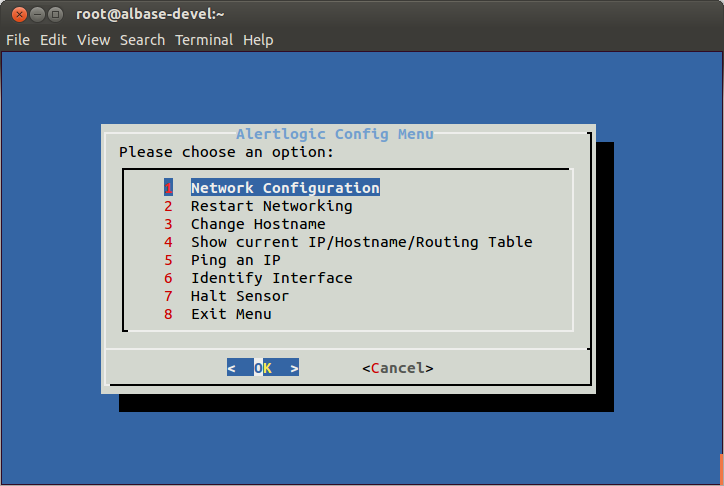
- Review the instructions, and then press Enter.
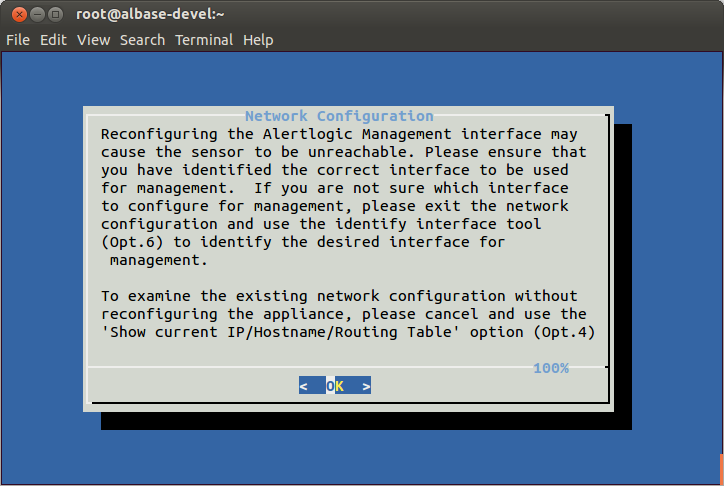
- Press Enter to continue.
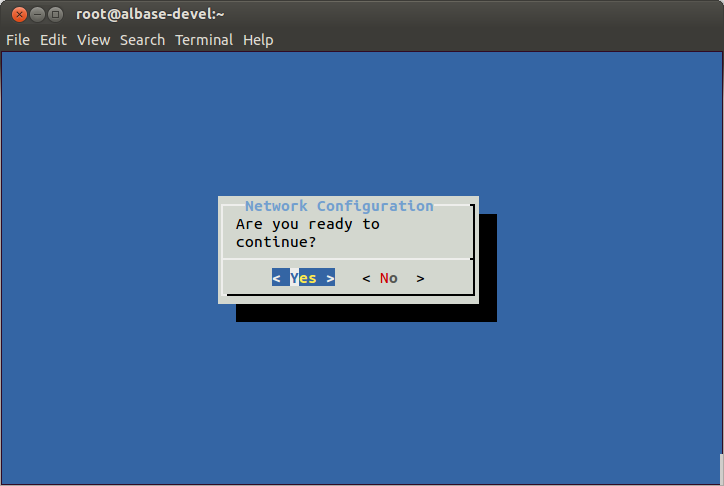
- On the Interfaces screen, press Enter to continue.
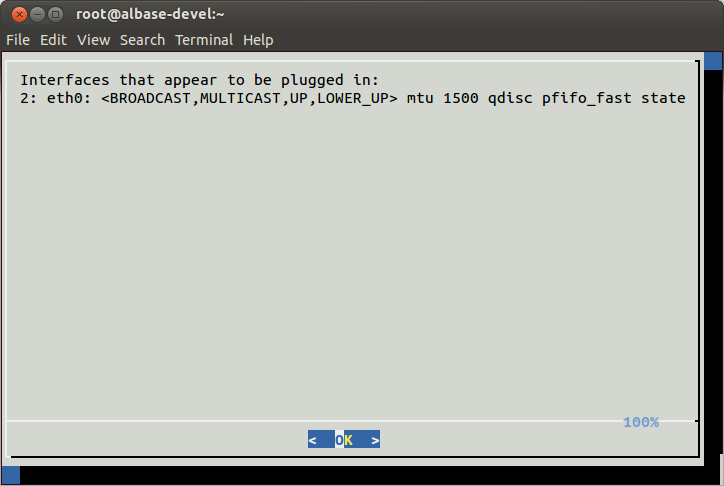

The Interfaces screen displays the connected interfaces. Typically, eth0 is the management interface as designated on the back of the sensor. However, other configurations could require management on a different interface.
- Select the desired management interface, and then press Enter.
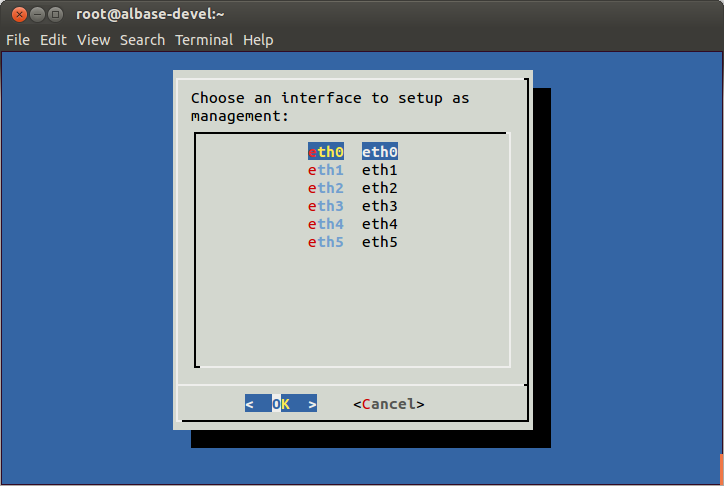
- Provide the IP address default gateway and subnet mask. Use the arrow keys to switch between fields.
Optional: Provide two DNS server IPs that the appliance can use instead of the default Google DNS servers.
- Press Enter.
- Press Enter to confirm configuration.
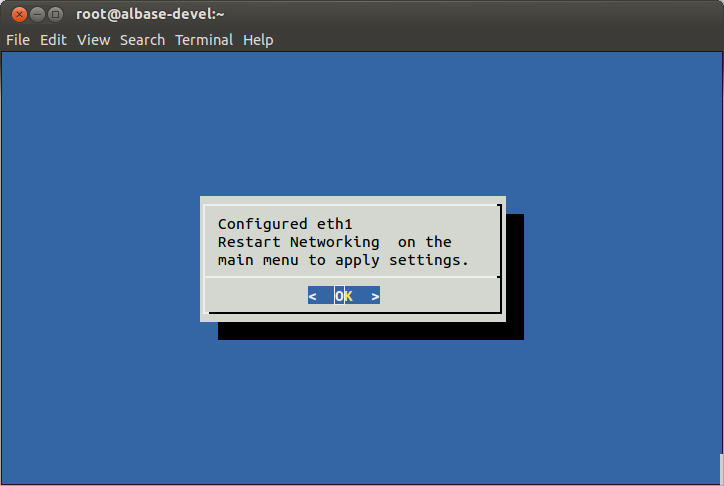
-
Reconnect any network cables that you previously disconnected.
To apply network changes:
- From the Main Menu, select Restart Networking, and then press Enter to apply the configuration changes performed in the previous section.
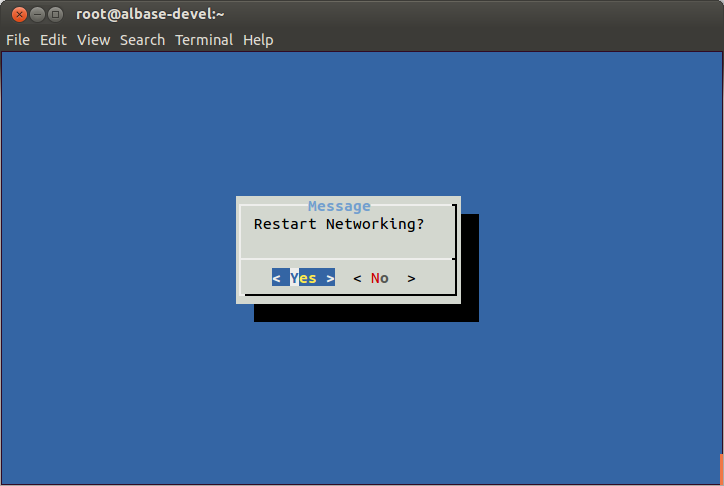
- Select Show Current IP/Hostname/Routing Table to verify the changed interface and IP configuration.
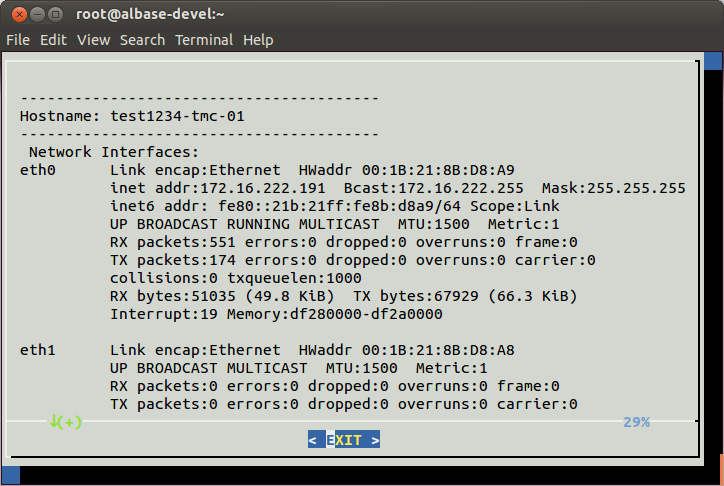
The configured Default Gateway appears with a destination of 0.0.0.0 , a flag of UG, and your enterprise default gateway. 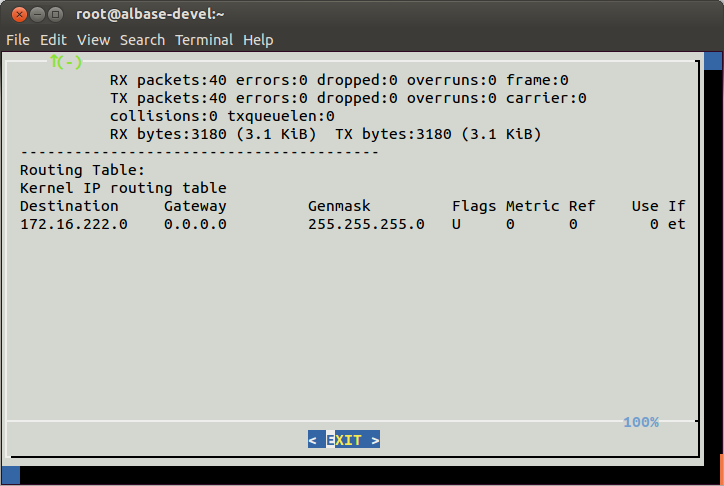
You can contact Alert Logic to verify connectivity with the appliance. The appliance should be reachable on your local network.
Confirm communication ability
You can perform this optional procedure to verify the physical appliance can communicate with other IP addresses.
- From the main menu, select Ping an IP, and then press Enter.
- Provide an IP address in the form provided, and then press Enter.
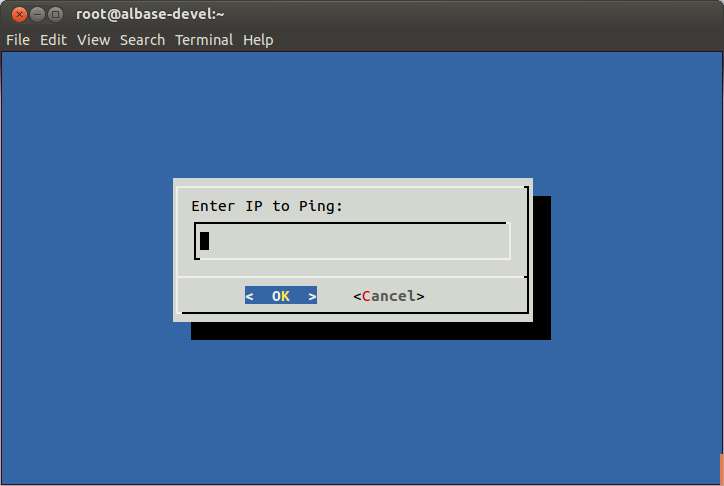
- After you verify communication with the IP address, press Enter.
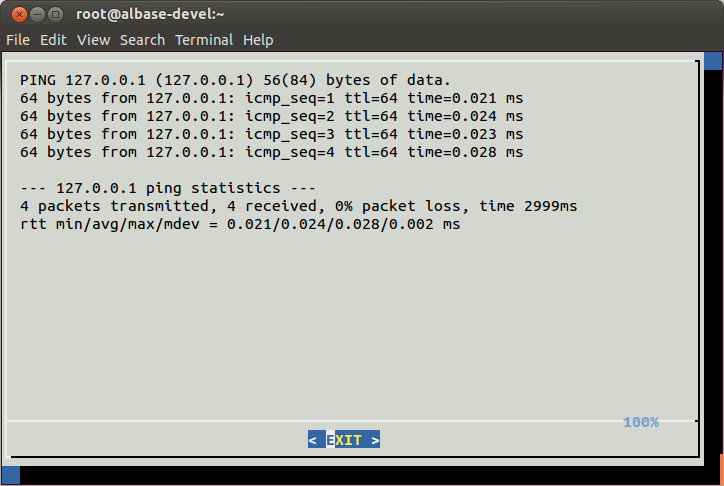
Identify Interfaces
The Identify Interfaces tool flashes the Link LED of a selected detected interface to assist you with cabling and connections.
To identify interfaces:
- From the Main Menu, select Identify Interface, review the instructions, and then press Enter.
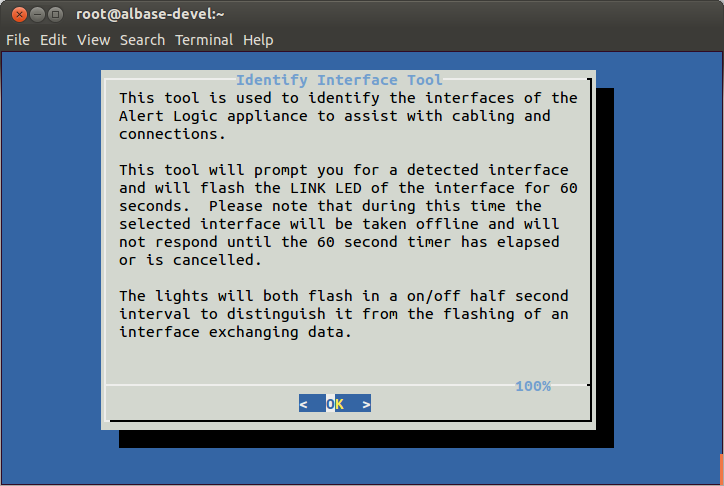
- To continue, press Enter.

- Select the interface to identify, and then press Enter.
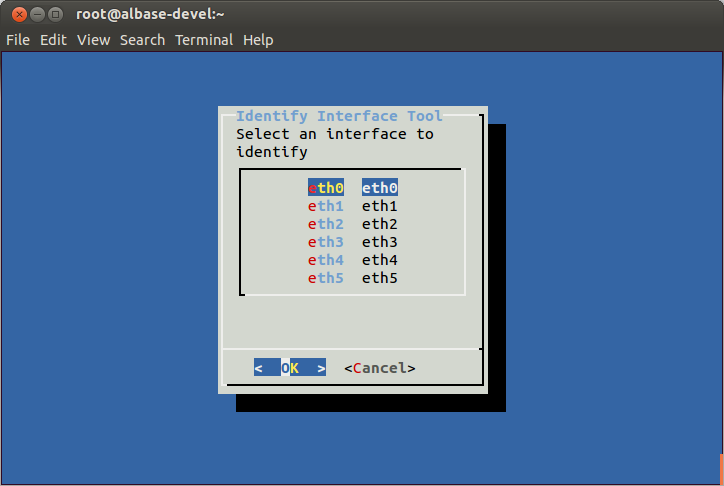
Test the network configuration
To test the network configuration:
- From the Network Configuration Console, select Test Connectivity Using ICMP Ping.
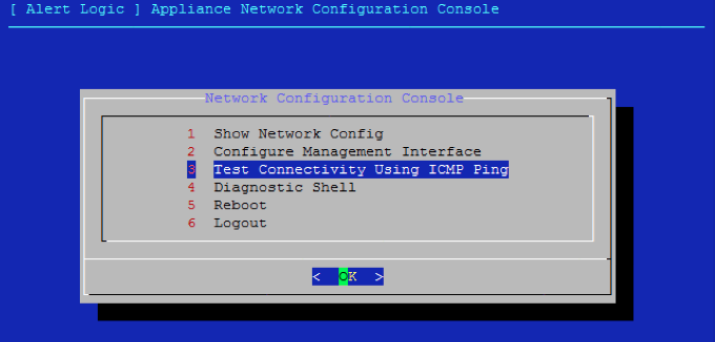
- Enter the IP address of the default gateway.
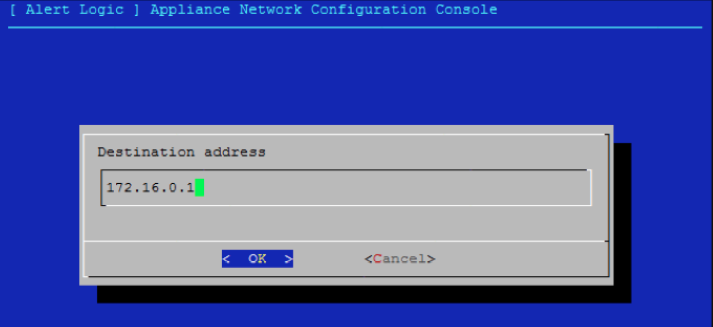
If you do not see a succession of ping responses, the connectivity test cannot ping the default gateway. Verify that the red Ethernet management port on the appliance is connected to the correct VLAN port, and that your IP information is correct.
-
After you ping the default gateway successfully, send an email to Alert Logic Onboarding. Provide the IP address of your appliance, or the NAT address if you use a separate internal and external addressing scheme.